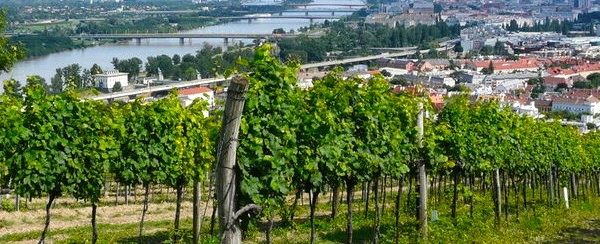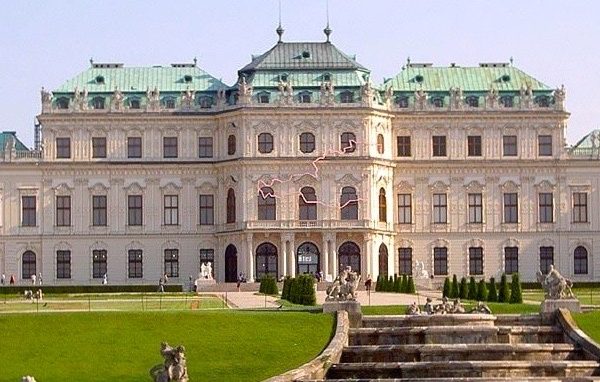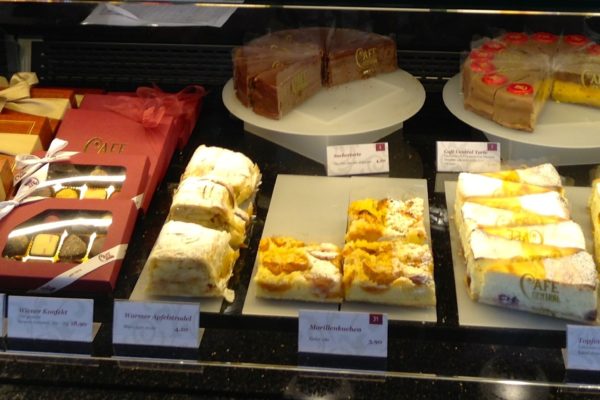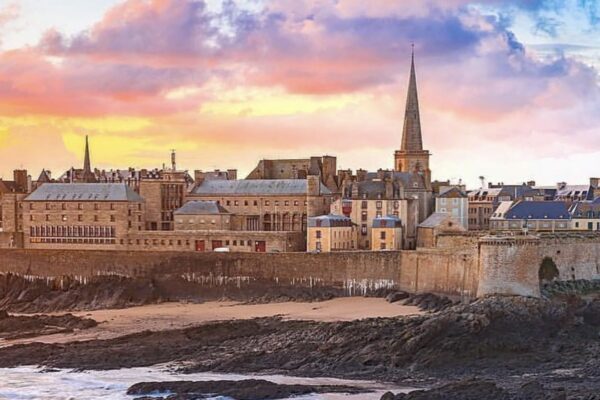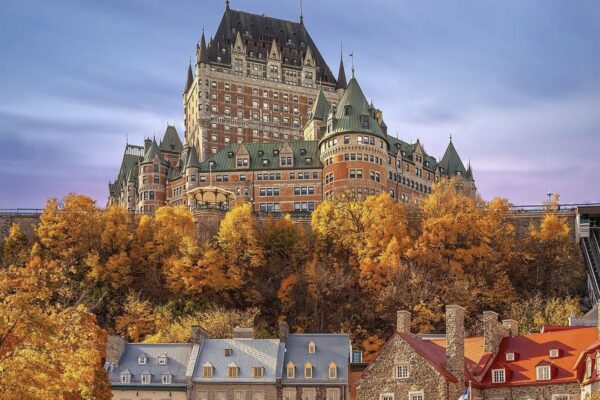Sweet on Vienna

With it’s beautifully maintained Baroque and Art Nouveau buildings, Vienna is itself a confection.
Text & photos by Marla Norman
With its Baroque and Art Nouveau buildings, romantic waltzes, and delectable pastries, Vienna is itself a confection. I hit the streets as soon as I arrive to get a quick taste!
My first stop is the stunning Hofburg. A small city within Vienna, this complex was once the nucleus of the Habsburg monarchy and is still the center of Austrian government. Nearby is Stephansdom (St. Stephen’s Cathedral) dating back some 870 years with its distinctive, asymmetrical spires. The interior carvings are renown for their masterly detail. The Stephen Tower provides extraordinary views of Vienna on high. I decide to think about the 343 steps to the top as I continue to stroll.

Hofburg, once the center of the Habsburg monarchy, now serves as the capital of Austria.
Further on, I visit the Postsparkasse (Post Office Savings Bank) designed by Otto Wagner, the most prominent of Vienna’s Art Nouveau or Jugendstil architects. Considered the father of 20th-Century architecture, Wagner along with artists such as Gustav Klimt, founded the Vienna Secession – an organization devoted to exploring new artistic styles.

Elegant waiters in black ties and vests at Café Central.
But it’s Vienna’s famous consumable art – pastries – that is the focus of my next stop at Café Central. Long one of the city’s most beloved sites, Café Central opened in 1876. It’s vaulted ceilings and graceful columns make it an architectural gem along with Vienna’s other notable structures. And, over the years, the Café has been frequented by any number of famous characters from Leon Trotsky to Sigmund Freud.
Still, trays of exquisite and endlessly varied pastries continue to be the big draw. Abfelstrudel filled with thick slices of fruit and spicy, buttery cinnamon is knee-weakening. Topfenstrudel filled to bursting with cream cheese is equally tempting — as are the Sabarskytorte, chocolate rum cakes and rehrücken, chocolate marzipan with orange confiture. Delicate chocolate mousse minicakes, truffles, eclairs and tarts are all arranged in tidy rows. Both tourists and locals pace along side the glass displays trying to chose among all the toothsome goodies. Meanwhile elegant waiters in black ties and vests provide unsmiling, but quick and efficient service.
Smiles, by the way, don’t come easily in Vienna. It’s surprising in a city with so many sweets, that the Viennese can seem a bit frosty initially. But I discover that after a little conversation, they warm up considerably and are every bit as charming as their artful confections.
KLIMT’S IMMORTAL KISS
It’s an image you’ve seen on magnets, mouse pads, t-shirts and every other marketable surface. An image that is so ubiquitous, it has almost lost significance. But to experience Gustav Klimt’s The Kiss face-to-face is something wondrous. A painting so astoundingly beautiful, it alone is worth a ticket to Vienna.
The canvas is quite large – a perfect square measuring 180 cm x 180 cm or almost 6 feet x 6 feet. It covers a whole section of wall at the Österreichische Galerie in the Belvedere Palace. Klimt used oil paint as a base, then applied layer upon layer of gold leaf, so the painting glows and shimmers, providing an electric shock to viewers.
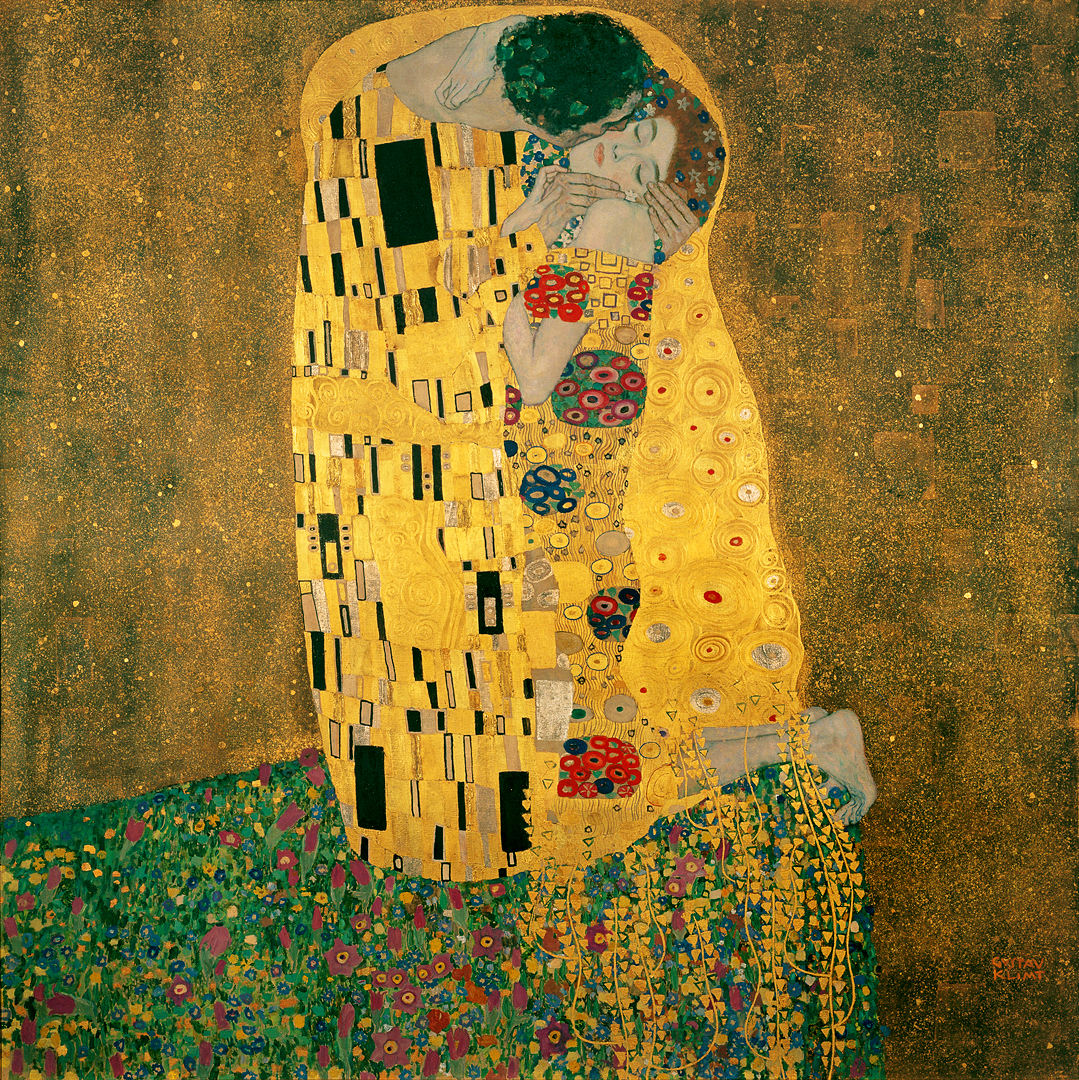
Gustav Klimt’s The Kiss.
The brilliant gold-colored robes worn by the lovers act as a kind of shelter to conceal and protect their bodies – or perhaps to stimulate imaginations. The couples’ entwined hands, the radiant face of the woman and the glittering fabric all work to create a powerful kinetic image that is as tender as it is erotic. The two figures positioned at the edge of a grassy cliff, with a starry firmament behind them, adds to the sexual imagery.
And although passion is not necessarily a word you’d immediately associate with Vienna’s icy white marble buildings and reserved citizens, this was precisely the environment that helped foster the Secession movement. Gustav Klimt was the first president of the Vienna Secession, a group of artists and architects who banded together to disavow the stiff, classic art of the day and explore natural forms and styles associated with Art Nouveau.
Read more about Klimt and the Vienna Secession in VIENNA UNWRAPPED.
THE HABSBURGS: KINGS OF KINGS
One of Europe’s most enduring dynasties, the House of Habsburg – originally from Switzerland – produced kings who ruled Austria, England, Germany, Hungary, Croatia, Ireland, Portugal, and Spain. The Habsburg family first became a recognized force during the 11th Century and occupied the throne of the Holy Roman Empire from 1438-1740. The last Habsburg king, Charles I of Austria (who also reigned as Charles IV of Hungary) ruled until 1918, when he essentially abdicated his throne.
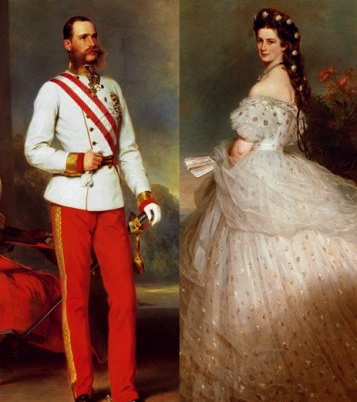
Portraits of Emperor Franz Josef and Empress Elisabeth, known as “Sissi.”
Much of Vienna is still tied to remnants of this great dynasty. Hofburg, the mammoth Imperial Palace complex, is today the official residence of the President of Austria. But many of the buildings within the palace grounds are open to visitors: the Imperial Apartments, the National Library, the Spanish Riding School (home of the famous Lipizzaner horses) and six museums – including a site devoted to the legendary Empress Elisabeth or “Sissi.”
I begin at Josefplatz, a lovingly restored courtyard that serves as a testament to Austria’s world influence and high culture. Emperor Joseph II – the plaza’s namesake – is represented on horseback.
From the plaza, I climb an impressive marble staircase to enter the Kaiserappartements (Imperial Apartments). Here is the austere cot used by Franz Josef – who by all accounts was dedicated to his subjects and built numerous public works and museums. Nearby is the gymnastic equipment used by the Empress Elisabeth along with gowns she wore for her wedding and state occasions. Considered to be one of the great beauties of her time, Sissi was obsessed with her looks and weight. She dieted and exercised incessantly to maintain a 16-inch waist. Her heel-length hair required hours of care daily. Tragically, in 1891, the Empress was assassinated in Geneva when an anarchist stabbed her with a file. The murder weapon is also on display in the museum.
Franz Josef was heartbroken at the death of his wife. Only nine years earlier, he had suffered the suicide death of his son, Crown Prince Rudolf. The lives of the royal family have inspired any number of films: The Crown Prince, starring Omar Sharif, Klaus Maria Brandauer and Christian Clavier recounts the death of Prince Rudolf. A trilogy entitled Sissi, starring Romy Schneider portrays the life of Elisabeth. See REEL TRAVEL: VIENNA in this issue for more details.
From the Imperial Apartments I tour the Schatzkammer (Imperial Treasury). Endless crowns and scepters, along with – incredibly – the Holy Lance, reputedly used by Romans to pierce the side of Jesus, are on display. Also here, is the Burgundian Treasure, which includes items from the Order of the Golden Fleece, tracing back to the Greek myth.

Habsburg table setting – the intricately folded napkin is so complicated, it was considered a state secret for many decades.
Not surprisingly, one of the most popular venues at the Hofburg are the world-famous Lipizzaner Horses trained at the Spanische Reitschule (Spanish Riding School). For over 440 years, these incredibly graceful animals have performed Haut École demonstrations. Tickets are in high demand, so if you plan to attend, be sure to order several weeks in advance.
Finally, exhausted from touring the vast complex, I find a quiet corner at the Hofbibliothek (National Library). There, I’m amazed by the grand Baroque architecture and beguiling trompe-l’oeil ceiling frescoes. Ancient manuscripts, beautifully illustrated, are on display along with old atlases and antique globes. Mozart performed regularly during Sunday matinees here. As I sit, I can almost hear notes from a long-ago minuet.
THE HABSBURGS: PART II
Grand as Hofburg is, Schönbrunn, the Habsburg summer palace, is even more magnificent. Austria’s most popular tourist destination and a UNESCO World Heritage Site, the estate is situated 4 miles from Hofburg on 176 hectares or 435 acres. The immense palace has 1,441 rooms, sculpted gardens with a maze, an orangerie, palm house, botanical garden, and a zoo.

The resplendent Habsburg summer palace – Schönbrunn – is Austria’s top tourist destination.
Views from the Gloriette – a large hill overlooking the property – are especially breathtaking. I take the twenty-minute walk through the gardens to reach the site, enjoying the spectacular landscape as we go. At the top of the Gloriette are pseudo Roman Ruins – popular during the 18th Century and a tribute to the Habsburg empire. Sitting in the small café, I feel as if I’ve traveled back in time over 300 years. I imagine having a conversation with Empress Maria Theresa, who was particularly fond of this very spot. Although – at the risk of sounding disrespectful – in later years she grew so large that six men were required to carry her up the hill.
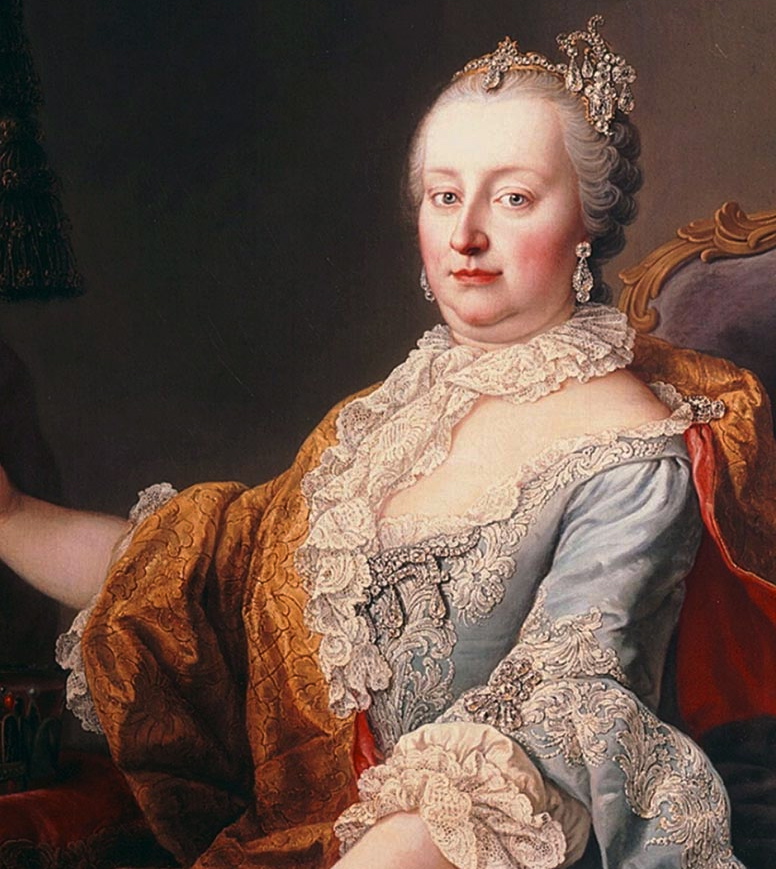
Portrait of Empress Maria Theresa. From Wikipedia.
Inside the palace, the majestic state rooms are every bit as as resplendent as the gardens. The Hall of Mirrors is a tour highlight, with exquisite crystal chandeliers, gold-leaf Rococo ornamentation, fresco-covered ceilings and plush red carpets for dramatic effect. It was here that a six-year-old Mozart performed for Maria Theresa and, according to palace lore, fell in love with her daughter, Marie Antoinette, who was seven at the time. If only those mirrors could talk!
Back in Vienna, is yet another splendid Habsburg estate, Belvedere Palace. Considered one of the finest examples of Baroque architecture in the world, the Belvedere is actually two palaces separated by a 17th Century French-style garden parterre. Known for its strict symmetry, the garden is a glorious place to walk in the warmer months. From a historical perspective, the palace was the home of Archduke Franz Ferdinand, whose assassination was the catalyst for World War I. These days, the Belvedere serves as an art museum and houses an impressive collection of Austrian painters with works by Gustav Klimt (including The Kiss) Egon Schiele and Oskar Kokoschka.
TAKE A BREAK!
Back in the city, try some of the traditional Viennese specialties at the Naschmarkt one of Europe’s premier open-air markets. With row upon row of fresh vegetables, fruits, meat and cheese specialties. There are also numerous small restaurants offering every food imaginable, from Dim Sum to Turkish Döner.

Schubert Restaurant features delicious Austrian-Mediterranean dishes and outstanding service.
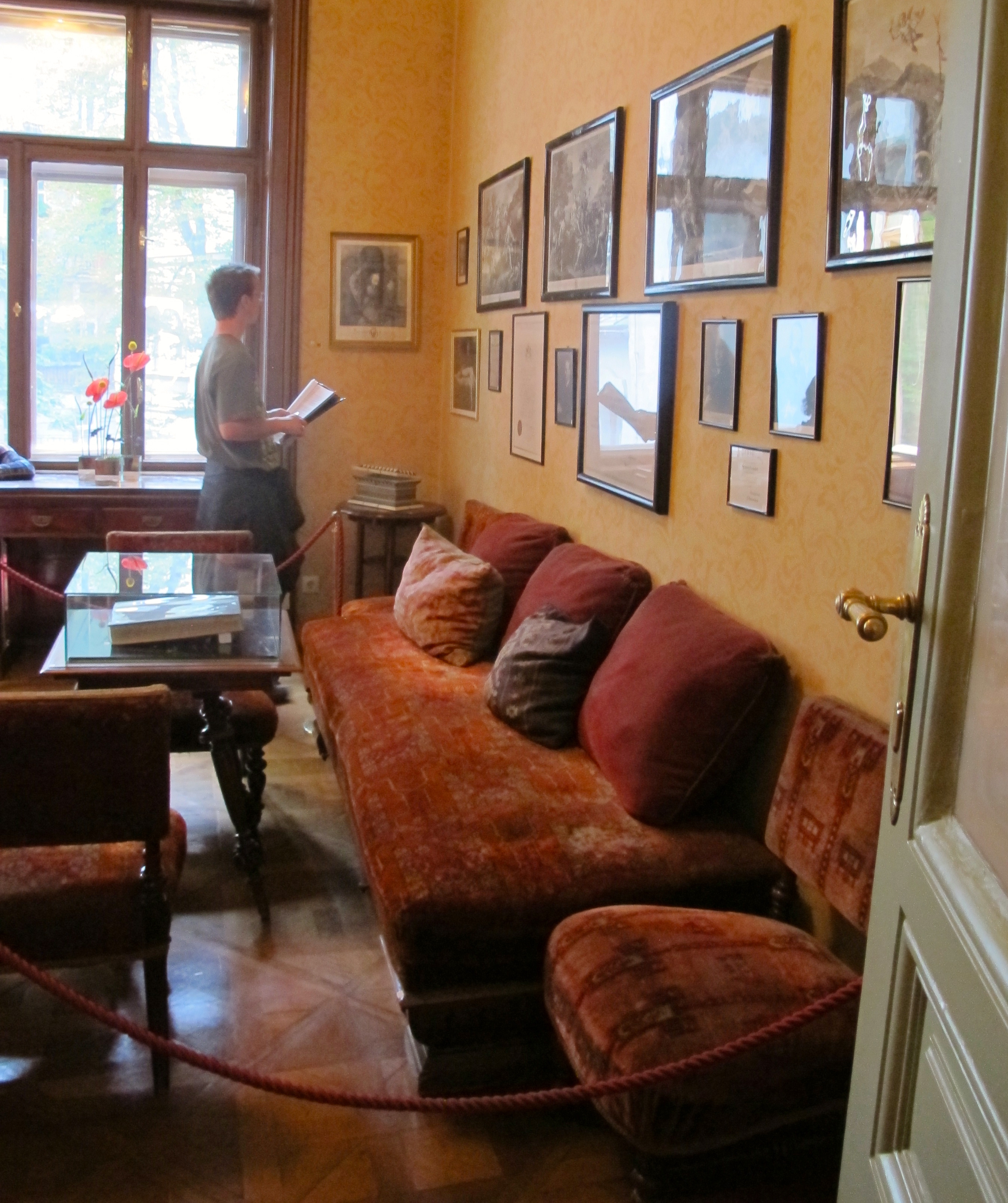
Waiting room of Sigmund Freud’s office in Vienna. The couch, however, is not the one Freud used to analyze his patients.
THE WORLD’S MOST FAMOUS COUCH
For most of his life, Sigmund Freud lived in Vienna, developing his theories for psychoanalysis, dream interpretation and libido. The five-room apartment he occupied with his family and where he saw his patients is now a museum: The Sigmund Freud House. First editions of Freud’s books, photographs, personal antiques and other memorabilia are on display. Visitors can also see historic films from the private life of Freud.
Furnishings in the waiting room and consultation room do not, unfortunately, include the famous couch. Like many prominent Jews, Freud fled his homeland in 1938 after Austria was annexed by Nazi Germany. He spent the last year of his life in England. Many of his belongs, including the renown couch, are housed in the Sigmund Freud Museum in London.
The Vienna museum does, however, have Europe’s largest psychoanalytic research library, with 35,000 volumes, and the Sigmund Freud Foundation research institute.
SO MANY MOZARTS!
OK – I confess! I fell for the tacky tourist predators wearing disheveled wigs and hawking Mozart concert tickets. But I’m so glad I did. The tickets I purchased through Vienna Mozart Concerts provided box seats at the Musikverein Golden Hall, where I enjoyed outstanding musicians and opera singers performing Mozart’s best-loved works.
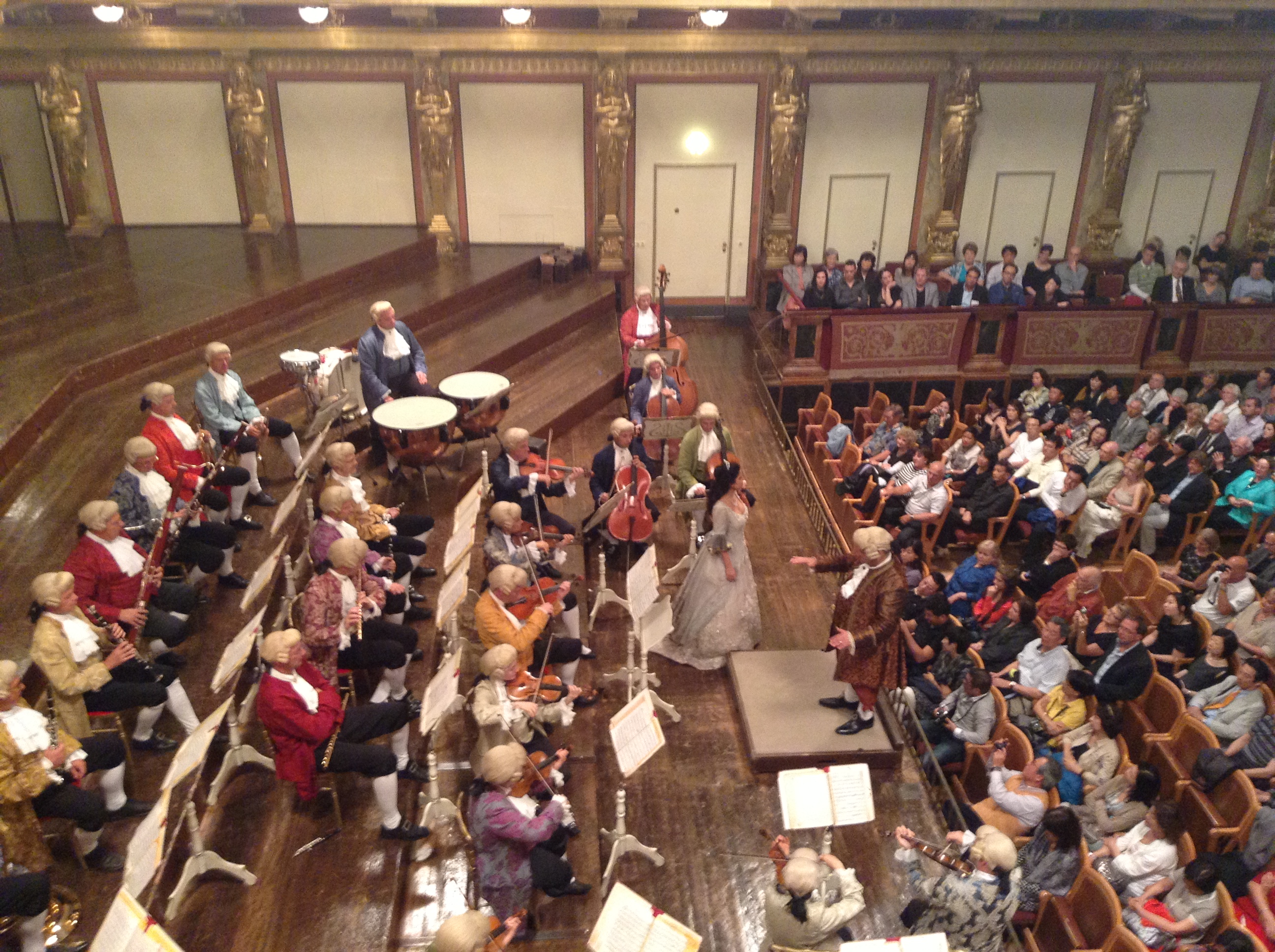
Musicians in costume perform Mozart at the Musikverein Golden Hall.
The historical costumes and wigs worn by the orchestra musicians are clearly designed to entice tourists, but the period dress is just plain fun and doesn’t detract in the least from the musicians’ superb performances. Above all, spending an evening in the beautiful Musikverein Golden Hall is, of itself, thrilling. Other venues offered through the Vienna Mozart Concerts include the State Opera and Konzerthaus.
As a finale, the orchestra plays Johann Strauss’ The Blue Danube and Radetzky March. Tourist kitsch, perhaps, but I walked out of the theater waltzing and humming – grateful to have experienced Eine Kleine Nachtmusik (A Little Night Music).
JAZZLAND
I left the powdered wigs far behind on my last night in Vienna. At Jazzland, American and jazz musicians from all over Europe converge in a club founded 30 years ago – a cellar, to be precise – a wonderfully intimate space, with great acoustics.
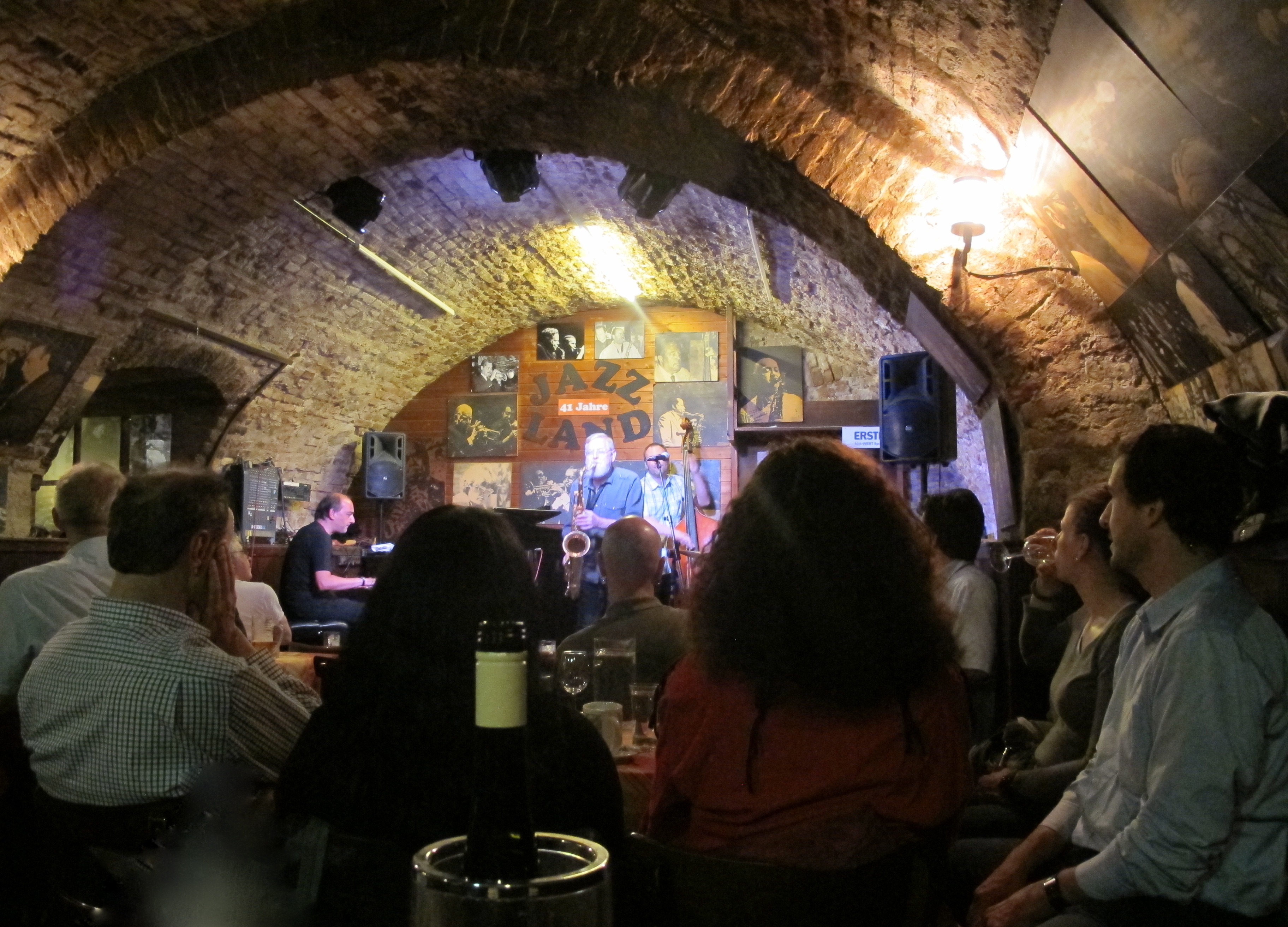
Saxophonist Lew Tabackin performs at Jazzland.
Tonight, Lew Tabackin, a flautist from the States performs with a trio. I’m surprised by the enthusiastic response from the Viennese audience. Clapping, swaying to the rhythms, smiling from ear to ear, these jazz lovers are enraptured with the music. And I find myself once again reevaluating this charmingly aloof, but oh-so-sweet city. Ich liebe dich Wien! (Love you, Vienna!)




